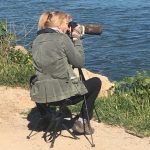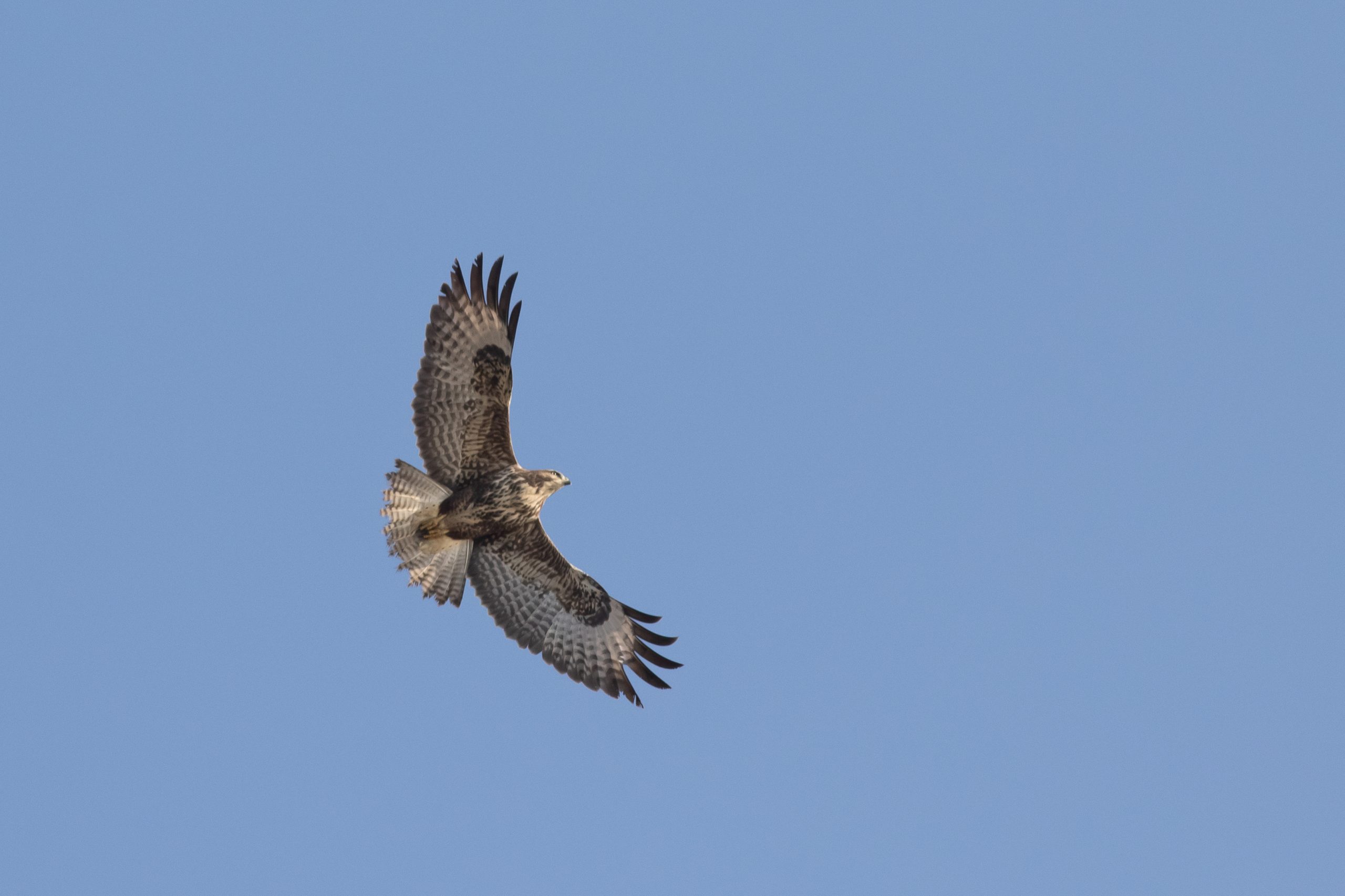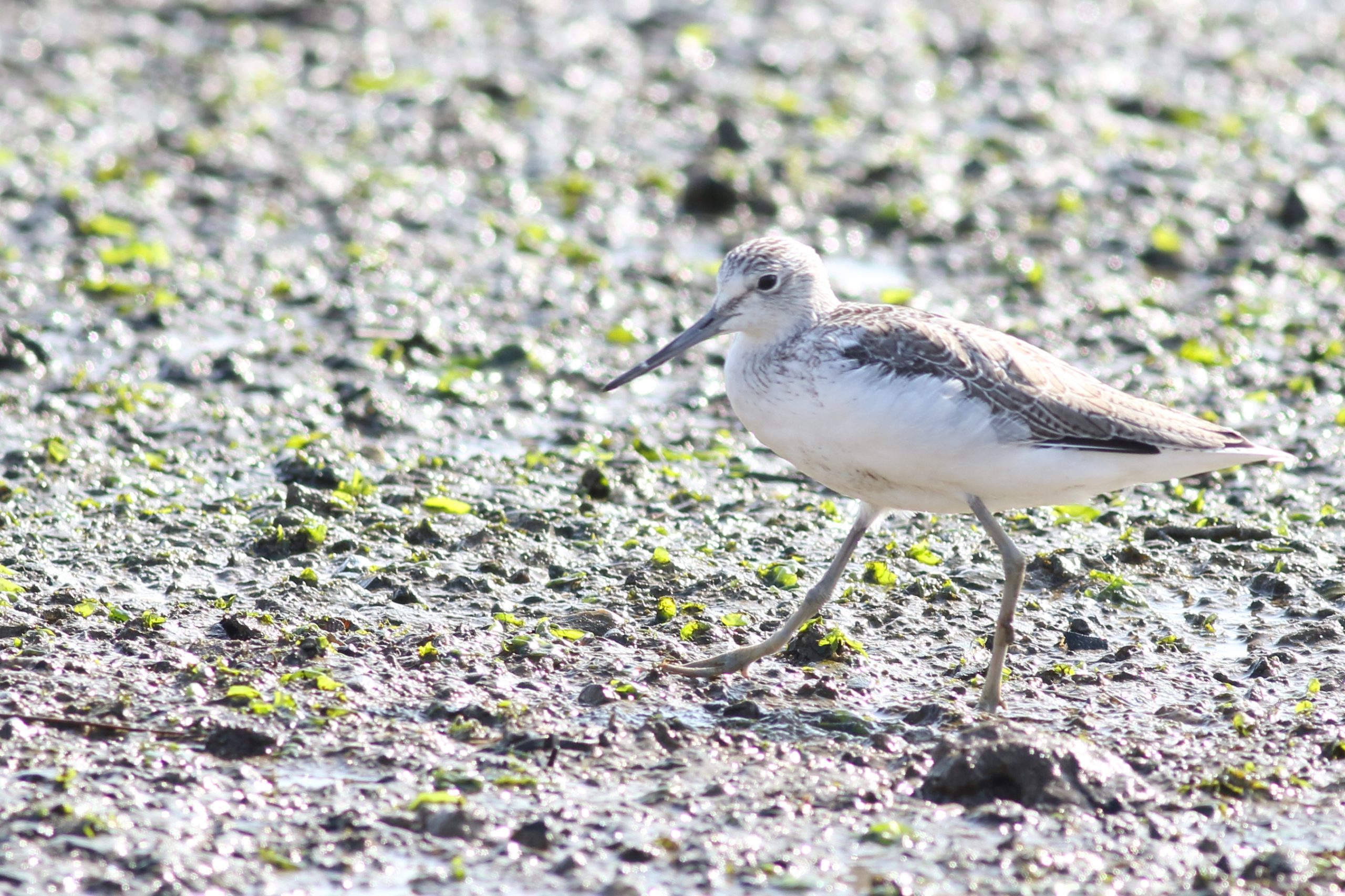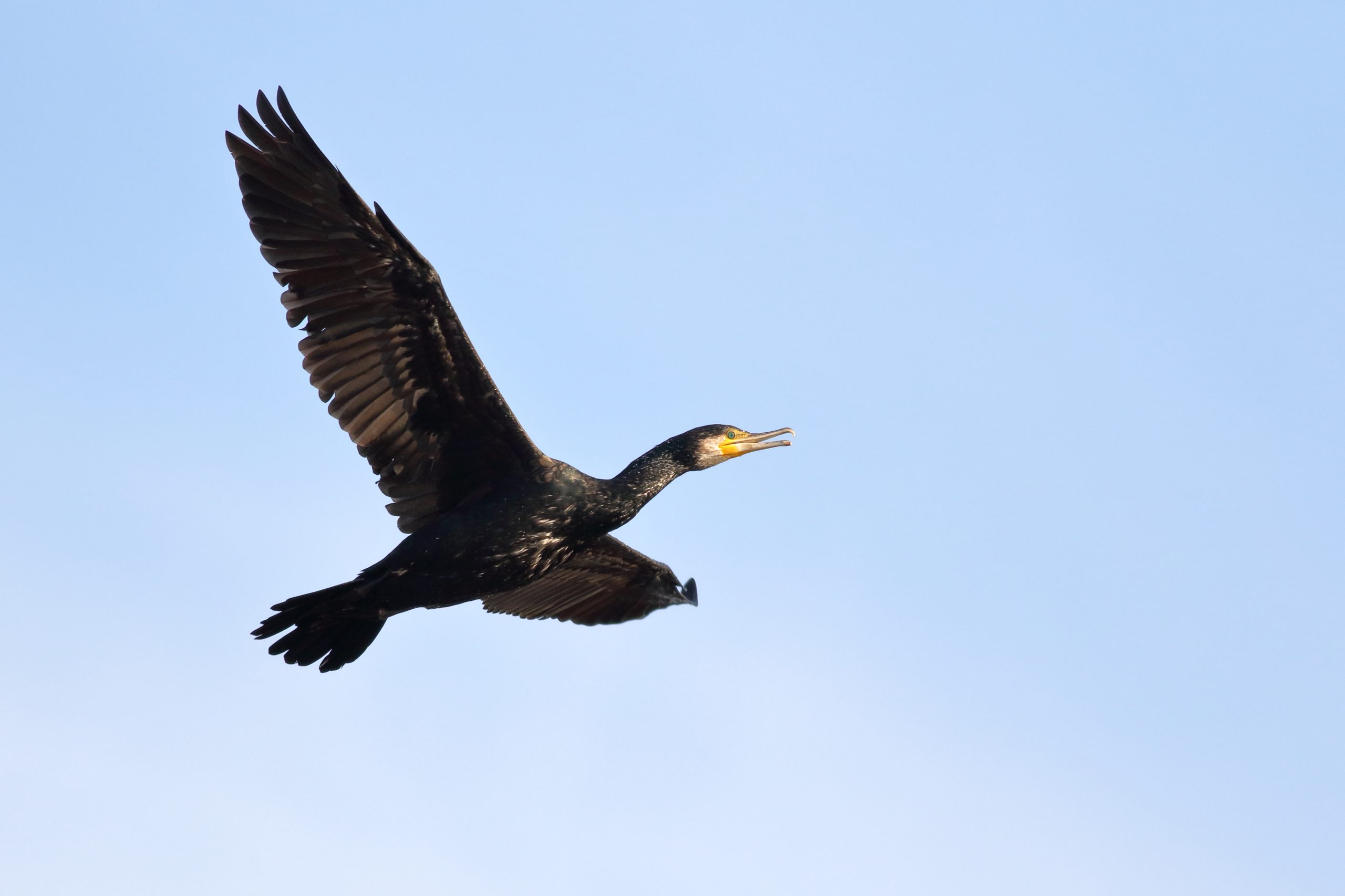By Sally Westwood
Common Buzzard
Deben Estuary and changing tides
The River Deben is thought to commence west of Ulveston Hall, near Mickfield, alternatively the Deben may stem from the south in Bedingfield1. The river flows along gradually turning into an estuary between Melton and Woodbridge, and enters the North Sea at Harwich Haven, between Bawdsey and Felixstowe Ferry. A significant feature of the Deben Estuary is the changing tides. The tide is described as “the ocean’s response to the gravitational pull of the Moon and the Sun”2 but more specifically, “it is the variation in this pull over the surface of the Earth that makes tides”3. When tide is rising and coming in, the North Sea washes heavy sediment4 into the Deben which forms intertidal flats around the area of the mouth of the estuary at Felixstowe Ferry. This produces sand and shingle beaches. Finer silt is driven along the estuary into the river to form the mudflats we see at the sides of the river near Woodbridge, and more extensively further along the river at Melton, Wilford Bridge and beyond. The tide rises and falls twice a day5. High water on the River Deben occurs at intervals of approximately twelve hours, and the tide starts ebbing to low tide about six hours following high tide. High tide occurs one hour later each day. The height of the tide is affected by both the strength and direction of wind and atmospheric pressure6.
Impact of the tides on waders
The change in tides has a considerable influence on the activities of the birds on the River Deben. The tides determine when birds have access to food7. At high tide waders stop feeding and settle in a roosting place, usually with flocks of other waders. Birds roost at the same place each year. They tend to select remote roosting sites, such as spits, that permit full view and provide safety. When there are large areas of mud flats, birds tend to roost on the seaward edge of the flats. If the tides are unusually high, with spring tides, and the mud flats are totally immersed, waders may fly to adjacent fields which are bare after ploughing or recent harvesting. Sea water mixes with fresh water in estuaries. The location where salt water mixes with fresh water moves, and this depends on the amount of fresh water flowing along and the current state of the tide8. Since salt water is heavier than fresh water it enters the estuary below the inflowing river water, on the surface of the water. The fauna and flora present in an estuarine area is determined by the salinity of the water, particularly invertebrate animals.
Greenshank
Vegetation on the Deben
Three species of Eelgrass9 are submerged by the tide or exposed briefly at low tide. Green Seaweed10 and Eelgrass are food for wintering Wigeon11 and Brent Geese12. Brown Seaweeds, such as Wracks live around rocks. Wracks are not eaten by birds, instead they are eaten by invertebrates, and these in turn are eaten by particular waders. Estuarine vegetation is a patchwork of different maritime plants, which have adapted in different ways to submergence and drainage of water. Cord-grass13 and Sea Aster14 are found on the lowest zones on the mud flats. Cord-grass has been planted on many estuaries on the East Coast. It has long roots and vast underground stems which help to bind and trap silt. Salt Marsh Grass15 covers many salt marshes, and spreads over the marshes like a lawn. If livestock and geese are seen grazing vigorously on the salt marshes at low tide, it usually means salt marsh grass is present. If the grazing is light, Sea Aster, particularly the type with rayless flowers, and low lying, bushes of green-grey Sea Purslane16 tend to be present in the marsh. In high salt marshes, that are less likely to be submerged by the tide, a variety of attractive plants appear at particular times of the year. White Scurvy Grass17 which is an edible cress appears in May. Sea Spurrey18 and Pink Thrift19 appear in June. This is followed by Blue Sea Lavenders20 in late July and August. Other less noticeable plants also appear on the high salt marshes, such as Sea Plantain21, Sea Milkwort22 and Sea Arrow-grass23. Salt marsh plants such as Sea Aster, Orache24 and Marsh Samphire25 may produce vast crops of seeds as winter feed for Reed Buntings26, finches, such as Twite27 and Skylarks28. These small birds attract Marsh Harriers29, Sparrowhawks30, Common Buzzards31, Merlins32 and Short-eared Owls33.
Molluscs and fish in the Deben
Birds on the Deben are attracted to the availability of their main food, although their main food may vary at different times of the year. It is not surprising that wildfowl and waders are attracted to the Deben, since mollusc that cope with the changing salinities of the water are abundant in the inter-tidal mud, and these are the main food of many species of birds on the Deben. Redshanks34 and Dunlins35 feed in muddy areas of the river and prefer to eat Corophium, a burrowing shrimp and Hydrobia, which is a tiny snail. Both of these creatures can be found in vast numbers in a small area, for example, 24,000 has been observed in a square metre36. Shellducks37 also eat these snails as a main food. Bar-tailed Godwits38 Eurasian Curlews39 and Grey Plovers40 eat Ragworms41 which are found in abundance on inner mud flats. Oystercatchers42 feed on cockles on sand banks at the edge of the mud flats. Ruddy Turnstones43 search rocky muddy areas for snails and crustaceans. Avocets44 use their upturned bill to find shrimps in liquid mud and shallow water. Greenshanks45 chase shrimps and fish in brackish pools. During the winter Grey Herons46, Great Cormorants47 and Little Grebes48 eat flounders. In the summer time flounders are eaten by passing Osprey49, terns and a variety of gulls. Another reason why the Deben is attractive to waders and wildfowl is because the shore tends not to freeze over during winter.
Great Cormorant
Common breeding birds on the salt marshes and banks of the Deben
Less accessible areas of salt marsh have small colonies of breeding Black-headed Gulls50, these are occasionally joined by terns. On the river bank, the most common breeding birds are Meadow Pipits51, Reed Buntings52 and Skylarks53. In the streams running parallel to the bank Sedge Warblers54 and Reed Warblers55 are also common breeding birds. Birds that nest on the high salt marshes are at risk from flooding from spring tides. Canada Geese56 tend to create their nests at regular intervals on the heaped mudbank, running some distance from Melton towards Wilford Bridge. The mudbank has a fence of wooden posts that forms a central line between the river edge and the flooded area of marsh behind. This mudbank sometimes becomes submerged in May and June during spring tides. Wildfowl moult their plumage in late summer and lose their ability to fly for several weeks. They need the estuary to obtain food that is in good supply and to feel safe from predators. Canada Geese, for example tend to stay at the far side of the river in late summer, when they are in moult to take advantage of sheltered water, mud flats and sand banks.
Risks to the river and its birds
Various factors may have a negative impact on the state of the river, including water recycling plants; pollution from the surrounding land57 and management practices involving low water flows and abstraction58.
Sally Westwood
 Sally Westwood is a Psychologist, and works as a researcher. She has taught in higher education as an English Language teacher. Her interests are varied. She has written many articles for Bird Magazines and Journals. She is also a professional bird photographer. Birds are her passion. She loves to draw and paint birds. She lives on a boat on the Deben and loves to sit and be with the birds, simply watching and photographing birds, in their daily activities.
Sally Westwood is a Psychologist, and works as a researcher. She has taught in higher education as an English Language teacher. Her interests are varied. She has written many articles for Bird Magazines and Journals. She is also a professional bird photographer. Birds are her passion. She loves to draw and paint birds. She lives on a boat on the Deben and loves to sit and be with the birds, simply watching and photographing birds, in their daily activities.
Footnotes
- Pye, A. S. (2021) River Deben from source to sea. Available from: https://www.geograph.org.uk/article/River-Deben-from-source-to-sea [Accessed 26 April 2024].
- Bowers, D. G. & Roberts, E. M. (2019)
- As above.
- Doeke, E. (2019) Intertidal Deposits: River Mouths, Tidal Flats and Coastal Lagoons. CRC Press.
- As above.
- White, J. (2017) The Science and Spirit of the Ocean. Trinity University Press.
- Cady, M, & Hume, R. (1998). The Complete Book of British Birds. AA/RSPB.
- Doeke (2019), as above.
- Zostera
- Enteromorpha
- Anas Penelope
- Branta bernicla
- Spartina maritima
- Tripolium pannonicum
- Puccinellia
- Atriplex portulacoides
- Cochlearia officinalis
- Spergularia media
- Armeria maritima
- Limonium sinuatum
- Plantago maritima
- Lysimachia maritima
- Triglochin maritima
- Atriplex hortensis
- Salicornia europaea
- Emberiza schoeniclus
- Carduelis flavirostris
- Alauda arvensis
- Circus aeruginosus
- Accipiter nisus
- Buteo buteo
- Falco columbarius
- Asio flammeus
- Tringa totanus
- Calidris alpina
- Cady & Hume (1998), as above
- Tadorna tadorna
- Limosa limosa
- Numenius arquata
- Pluvialis squatarola
- Nereididae
- Haematous
- Arenaria interpres
- Recurvirostra avosetta
- Tringa nebularia
- Ardea cinerea
- Phalacrocorax carbo
- Tachybaptus ruficollis
- Pandion haliaetus
- Larus ridibundus
- Anthus pratensis
- Emberiza schoeniclus
- Alauda arvensis
- Acrocephalus schoenobaenus
- Acrocephalus scirpaceus
- Branta canadensis
- Essex and Suffolk Rivers Trust. (2024) Recovering the Deben from source to sea. Available from: https://www.essexsuffolkriverstrust.org/recovering-the-deben [Accessed 26 April 2024]. 57 For further information on pollution see the Deben Climate Centre report: Deben Climate Centre. (2024) Report on the Quality in the River Deben February 2024. Available from: https://www.woodbridgeclimateactioncentre.org/post/deben-climate-centre-report-details-high-pollution-levels-in-the-river-deben [Accessed 26 April 2024].
- For further information on saltmarsh and mudflats see: Suffolk Biodiversity Information Service. (n.d.) Coastal Saltmarsh and Intertidal Mudflats. Available from: https://www.suffolkbis.org.uk/sites/default/files/images/habitat/Coastal saltmarsh and intertidal mudflats factsheet.pdf [Accessed 22 April 2024].



